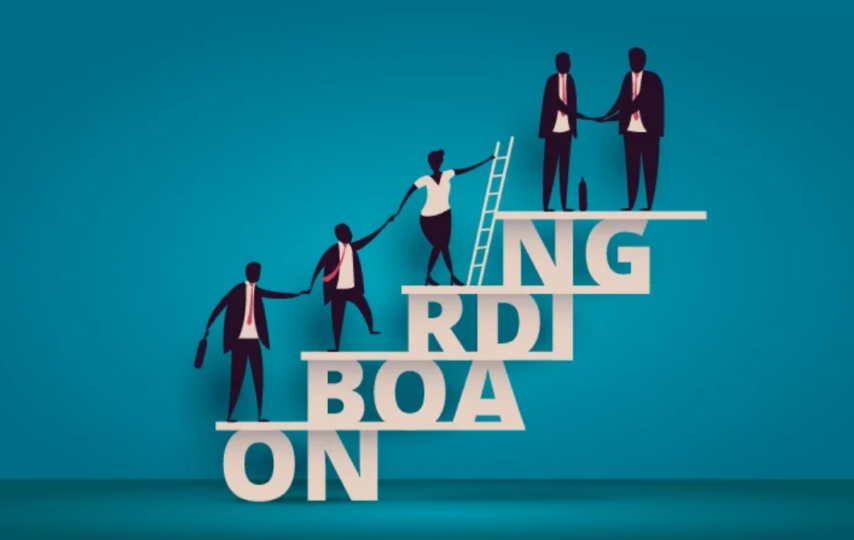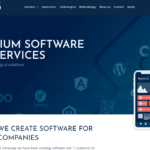The key to a successful organization lies in its employees; getting them off to a good start is crucial. With recent studies by Zavvy revealing that an effective onboarding process can improve new hire retention by 82%, the importance of a well-structured, thorough onboarding process becomes apparent. Another report by HRcloud shows businesses that have organized onboarding processes have seen a 60% increase in revenue within a year.
Effective onboarding software serves as a vital bridge between hiring new employees and ensuring their long-term success within the organization. As we delve into the 5 C’s that make onboarding software truly effective, consider these compelling statistics and the significant impact they suggest such a system can have on an organization’s success.
What is Onboarding Software and Why is it Important?
Onboarding software is designed to facilitate a smooth transition for new hires into their roles within the company. It ensures employees understand their job responsibilities, acclimate to the company culture, and feel valued from day one. A well-structured onboarding process can lead to increased job satisfaction, better job performance, more significant commitment to the organization, and stress reduction.
Onboarding software reduces the stress associated with starting a new job by providing all necessary information in an organized, accessible manner. This allows new hires to focus on what truly matters – contributing to the company’s success.
The effectiveness of onboarding software hinges on five key components, known as the 5 C’s: Compliance, Clarification, Culture, Connection, and Checkback. Each plays a crucial role in creating a holistic onboarding experience that leaves new hires feeling welcomed, valued, and prepared for their journey ahead in the company.
Compliance: How to Ensure New Hires Complete All the Required Paperwork
Defining the 1st C – Compliance
Regarding onboarding software, compliance means ensuring that new hires complete all the required paperwork, forms, and legal documents necessary for employment. It’s about meeting legal and policy requirements protecting the company and the employee.
How Onboarding Software Helps with Compliance
Onboarding software simplifies compliance by saving time, reducing errors, increasing security, and improving auditability. It automates many of the mundane tasks involved in onboarding, reducing the risk of human error and non-compliance.
For example, onboarding software features like electronic signatures, document management, and automated reminders make it easier for new hires to complete the necessary paperwork and for HR to track completion.
Clarification: How to Provide Clear and Consistent Information about the Job Role and Expectations
Defining the 2nd C – Clarification
Clarification in onboarding software involves providing clear and consistent information about the job role, expectations, goals, and feedback mechanisms. This helps new hires understand what is expected of them in their new role.
How Onboarding Software Helps with Clarification
Onboarding software enhances performance, reduces confusion, increases motivation, and fosters alignment with organizational goals. Interactive product tours, personalized learning paths, goal-setting and tracking tools, and performance reviews are some features that facilitate clarification.
Culture: How to Introduce New Hires to the Company’s Values and Norms
Defining the 3rd C – Culture
In terms of onboarding software, culture refers to introducing new hires to the company’s values, norms, behaviors, and stories. It’s about making new hires feel part of the team and aligning them with the company’s mission and vision.
How Onboarding Software Helps with Culture
Onboarding software enables companies to build trust, engagement, loyalty, and a sense of belonging among new hires. Features such as welcome videos, social feeds, gamification, recognition, and rewards systems can help convey the company’s culture.
Connection: How to Establish Relationships between New Hires and Their Peers, Managers, and Mentors
Defining the 4th C – Connection
Connection involves establishing relationships between new hires and their peers, managers, mentors, and other stakeholders. This creates a supportive environment that encourages communication and collaboration.
How Onboarding Software Helps with Connection
Onboarding software improves communication, collaboration, support, and retention by fostering strong connections from the start. It can provide forums for interaction, peer-to-peer recognition, and spaces for collaboration, helping new hires feel part of the team.
Checkback: How to Monitor and Evaluate the Progress and Satisfaction of New Hires
Defining the 5th C – Checkback
Checkback is about monitoring and evaluating the progress and satisfaction of new hires throughout the onboarding process. It’s a way to ensure the onboarding process is effective and adjustments can be made if necessary.
How Onboarding Software Helps with Checkback
Onboarding software allows companies to identify gaps, issues, and opportunities for improvement, measure the impact and ROI of onboarding, and ensure continuous learning and development. Features like analytics dashboards, reports, surveys, and quizzes can provide valuable insights into the onboarding experience.
Conclusion
In conclusion, compliance, clarification, culture, connection, and checkback are crucial elements of an effective onboarding process facilitated by onboarding software. With such software, organizations can ensure a smooth transition for new hires, leading to increased job satisfaction, better performance, and more significant organizational commitment.
Implementing effective onboarding software based on the 5 C’s framework improves the new hire experience and contributes to your business’s success. Now is the time to take action and capitalize on the benefits of effective onboarding software!








